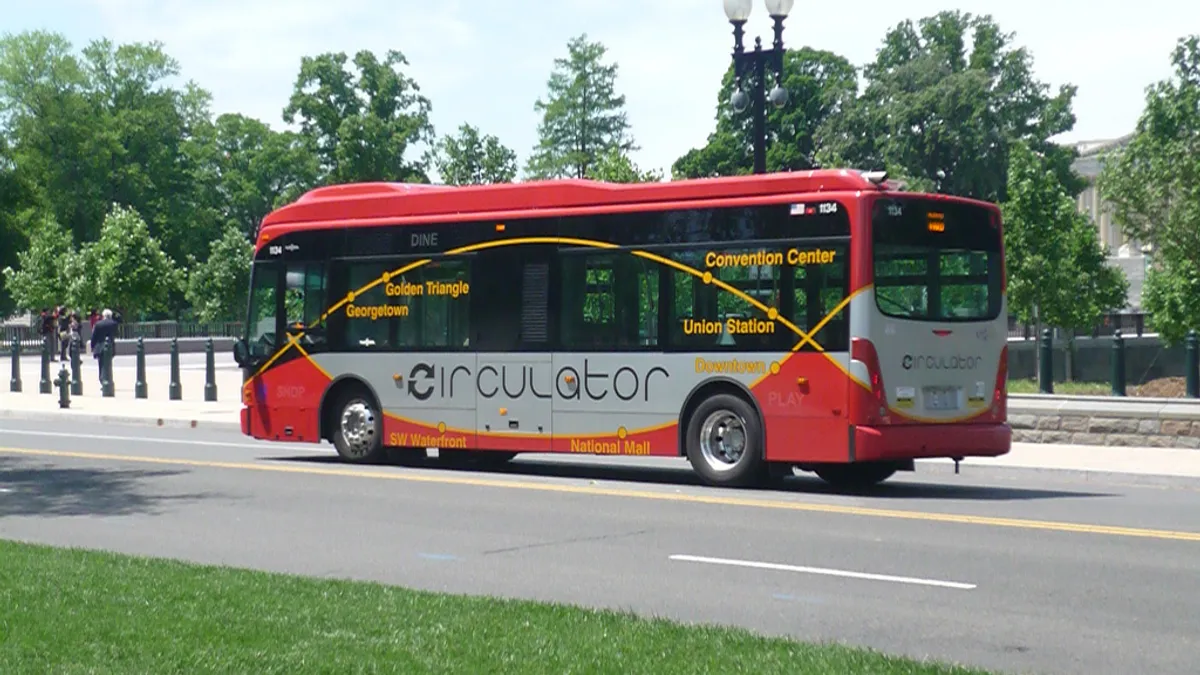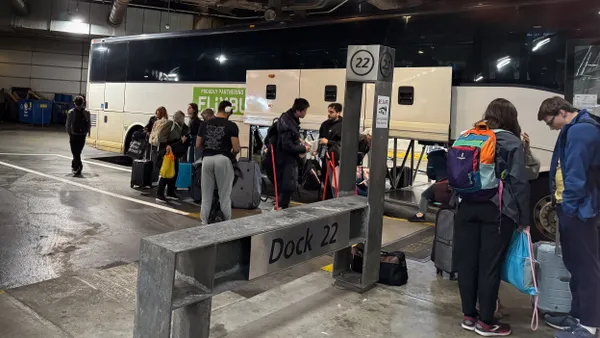Dive Brief:
- Washington, DC is getting a new fleet of 14 battery-electric buses on its DC Circulator system, making it the largest electric bus fleet in the DC metropolitan area.
- The city estimates that the zero emissions vehicles will eliminate nearly 244,000 pounds of carbon emissions each year, as well as reducing fuel and maintenance costs by $6 million over the buses' lifetime.
- The new buses go into service on May 1.
Dive Insight:
The DC Circulator system complements, but technically is not a part of, the region's primary bus system. It has six lines, mostly in the city center, that transport people along heavily traveled corridors with stops at popular destinations such as museums and monuments.
The buses are expected to last about 12 years, which is in line with traditional buses' lifespan. During that time, the fleet of 14 battery-electric buses is expected to displace nearly 89,000 gallons of diesel fuel each year. The vehicles also will provide riders with Wi-Fi.
A lot of cities have been converting at least part of their bus fleets to electric vehicles, including St. Louis, Chicago and Stockton, CA, while locations in New York and Alaska have tested pilot programs. In addition to the environmental benefits, the buses improve residents' quality of life because they run more quietly than diesel vehicles.
Many more electric bus additions are on the horizon thanks to the Federal Transit Administration's $264 million in grants that will go toward improving cities' buses and bus infrastructure. The grants will fund 139 bus projects, and a portion of those are electric vehicle upgrades or replacements.












